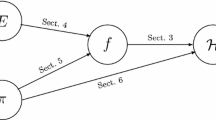Abstract
Ensuring the integrity of data is one of the staple objectives in information security. For this purpose, one can use different algorithms and approaches based on cryptographic hash functions, block ciphers in message authentication code mode of operation, etc. In the case of dynamic integrity checking, such known approaches require significant computing resources. In this paper, we propose a class of algorithms that represents a rational compromise between the resource usage, the performance and the security level. The proposed algorithms are based on a combination of additive generators, s-boxes and a hash function that meets modern cryptographic strength requirements. By methods of the matrix-graph approach, we study the mixing properties of the input data code generation algorithm, which is essential for integrity checking. By means of computational experiments the performance and a number of cryptographic properties of the algorithm under research were compared with those of well-known algorithms. The comparison results show the performance advantage of the proposed algorithm with parity of other cryptographic properties.


Similar content being viewed by others
Notes
Crypto + + Library: free C + + class library of cryptographic schemes. https://cryptopp.com/.
Hash function t1ha: https://github.com/erthink/t1ha.
SMHasher test suite description: https://github.com/aappleby/smhasher/wiki/SMHasher.
References
Fomichev, V.M., Melnikov, D.A.: Cryptographic methods of information security, in 2 parts. Part 2. The textbook for undergraduate academic/Under the editorship of V. M. Fomichev/YURAYT, Moscow, (2016) (in Russian)
Schneier, B.: Applied Cryptography: Protocols, Algorithms, and Source Code in C, 2nd edn. John Wiley and Sons Inc, New York (1995)
Stigge, M., Plotz, H., Muller, W., Redlich, J.-P.: Reversing CRC - Theory and Practice // HU Berlin Public Report (2006)
Fomichev, V.M., Koreneva, A.M., Nabiev, T.R.: «On the new integrity checking algorithm», RusCrypto’20, (in Russian), https: //www.ruscrypto.ru/resource/archive/rc2020/files/02_koreneva_fomichev.pdf
Bobrovskiy, D.A., Zadorozhny, D.I., Koreneva, A.M., Nabiev, T.R., Fomichev, V.M. «On integrity checking of stored data using hashing», RusCrypto’21, (in Russian), https://www.ruscrypto.ru/resource/archive/rc2021/files/02_bobrovskiy_zadorozhniy_koreneva_nabiyev_fomichev.pdf
Fomichev, V.M., Avezova, Y.E., Koreneva, A.M., Kyazhin, S.N.: Primitivity and local primitivity of digraphs and nonnegative matrices. J. Appl. Industr. Math. 12(3), 453–469 (2018). https://doi.org/10.1134/s1990478918030067
Frobenius, G.: Über Matrizen aus nicht negativen Elementen // Sitzungsber. K. Preuss. Akad. Wiss. Berlin, pp. 456–477 (1912)
Dulmage, A.L., Mendelsohn, N.S.: The exponent of a primitive matrix. Can. Math. Bull 5, 241–244 (1962)
Berger, T.P., Francq, J., Minier, M., Thomas, G.: Extended generalized feistel networks using matrix representation to propose a new lightweight block cipher: lilliput //. IEEE Trans. Comput. 65(7), 2074–2089 (2016)
Berger, T.P., Minier, M., Thomas, G.: Extended generalized feistel networks using matrix representation, SAC, (2013) http://sac2013.irmacs.sfu.ca/slides/s16.pdf
Perkins, P.: A theorem on regular graphs. Pacific J. Math. II, 1529–1533 (1961)
Fomichev, V.M., Kyazhin, S.N.: Local Primitivity of Matrices and Graphs. J. Appl. Ind. Math. 11(1), 26–39 (2017). https://doi.org/10.1134/S1990478917010045
Brualdi, R.A., Liu, B.: Generalized exponents of primitive directed graphs. J. Graph Theory. 14, 483–499 (1990)
Huang, Y., Liu, B.: Generalized r-exponents of primitive digraphs. Taiwan J. Math. 15(5), 1999–2012 (2011)
Liu, B.: Generalized exponents of Boolean matrices. Linear Algebra Appl. 373, 169–182 (2003)
Miao, Z., Zhang, K.: The local exponent sets of primitive digraphs. Linear Algebra Appl. 307, 15–33 (2000)
Shen, J., Neufeld, S.: Local exponents of primitive digraphs. Linear Algebra Appl. 268, 117–129 (1998)
Fomichev, V., Koreneva, A.: Encryption performance and security of certain wide block ciphers. J. Comput. Virol. Hacking Tech. 16(3), 197–216 (2020). https://doi.org/10.1007/s11416-020-00351-1
Fomichev, V.M.: Estimating nonlinearity characteristics for iterative transformations of a vector space. J. Appl. Ind. Math. 14, 610–622 (2020). https://doi.org/10.1134/S199047892004002X
Fomichev, V.M.: Matrix-graph approach for studying nonlinearity of transformations on vector space, CTCrypt (2019) https://ctcrypt.ru/files/files/2019/materials/08_Fomichev.pdf
Fomichev, V.M., Koreneva, A.M.: Mixing properties of modified additive generators. J. Appl. Industr. Math. 11(2), 215–226 (2017). https://doi.org/10.1134/s1990478917020077
Knuth, D.E.: The Art of Computer Programming, Volume 2 (3rd ed.): Seminumerical Algorithms. Addison-Wesley Longman Publishing Co., Inc., Boston (1997)
Acknowledgements
We are grateful to Professor Eric Filiol and Director of RusCrypto Association Dr. Alex Zhukov for their support during the preparation of this paper. We acknowledge “Security Code”, Ltd. for the opportunity to conduct our study. We also thank Anastasia Fomina for her help with translation.
Author information
Authors and Affiliations
Corresponding author
Additional information
Publisher's Note
Springer Nature remains neutral with regard to jurisdictional claims in published maps and institutional affiliations.
Rights and permissions
About this article
Cite this article
Fomichev, V., Bobrovskiy, D., Koreneva, A. et al. Data integrity algorithm based on additive generators and hash function. J Comput Virol Hack Tech 18, 31–41 (2022). https://doi.org/10.1007/s11416-021-00405-y
Received:
Accepted:
Published:
Issue Date:
DOI: https://doi.org/10.1007/s11416-021-00405-y




